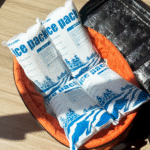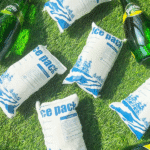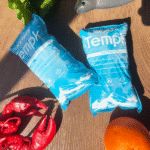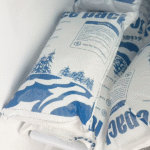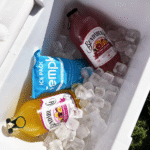What temperature are dry ice packs under real shipping conditions? At standard pressure, dry ice sits at −78.5 °C (−109.3 °F). In a shipper, internal air typically holds between about −70 °C and −20 °C depending on insulation, Entlüftung, and pack placement. You’ll see why this range matters, how much dry ice to use, and how to stay compliant in 2025.

-
Exact numbers: what temperature are dry ice packs at the surface, in the box air, and at the product core
-
Sizing made simple: quick math for sublimation rates and a dry ice quantity estimator
-
Safer pack-outs: Entlüftung, Etiketten (UN1845), and spacing to prevent freeze damage
-
Smart choices: when dry ice beats gel/PCM—and when it doesn’t
-
Trends für 2025: vent membranes, edge-aware loggers, CO₂ recovery, and digital DG workflows
What temperature are dry ice packs under real shipping conditions?
Kurze Antwort: Dry ice is −78.5 °C at the source; box air stabilizes warmer (≈ −70 °C to −20 °C). Product core lags the air and stays below its spec if you size mass and insulation correctly. This is why what temperature are dry ice packs is a system question, not just a single number.
Warum ist es wichtig: If you must hold ≤−18/−20 °C (Eiscreme, gefrorene Desserts, some biologics), a −78.5 °C “cold battery” gives large safety headroom. For 2–8 °C, Trockeneis ist too cold—use gel or PCM to avoid accidental freezing.
How much dry ice to start with?
A practical daily estimator is:
Trockeneis (lb) = (Transit hours ÷ 24) × Sublimation rate (lb/24 h)
Plan with typical rates by shipper quality and add a 10–30 % buffer for hand-offs and ambient spikes.
| Shipper Type | Isolationsqualität | Typical Sublimation (lb/24 h) | Was es für Sie bedeutet |
|---|---|---|---|
| EPS -Schaum (≈ 2″ wall) | Exzellent | 4–6 | Great for 48–72 h lanes |
| Rigid plastic + Liner | Gut | 6–8 | Balanced cost/hold |
| Corrugated + Liner | Mäßig | 8–10 | Add mass or shorten route |
| Pallet foam crate | Prämie | 10–20 / pallet | Scale with openings and cube |
Für die Spitze: It’s often cheaper to improve insulation than to keep adding dry ice. Better walls reduce loss across every touchpoint.
Pack placement patterns that actually work
-
Top-load only: Kaltes Waschbecken; watch bottom warm-up on longer lanes
-
Spitze + unten: flatter gradients for mixed-density loads
-
Surround (Seiten + Spitze): most uniform profile; needs more initial mass
-
Interstitial (between layers): fast pull-down; add spacers for fragile packs
Real-world snapshot: A dessert brand cut temperature excursions by 38 % after switching from top-only blocks to a surround pellet pattern with the same mass.
What temperature are dry ice packs vs. gel and PCM packs?
Fazit: Use dry ice for frozen (≤−20 °C). Use gel/PCM for 2–8 °C or CRT.
| Cooling Element | Set-Point / Behavior | Beste Verwendung | Watch-outs |
|---|---|---|---|
| Trockeneis (CO₂ UN1845) | −78.5 °C sublimes | Deep-frozen lanes | Venting required |
| Gel pack (0 °C) | 0 °C melts | Gekühltes Essen | Short hold |
| PCM −21 °C | Phase at −21 °C | Gefrorene Lebensmittel | Voraussetzung |
| PCM +5 °C | Phase ≈ +5 °C | Impfungen | Avoid freezing |
| PCM +22 °C | Phase ≈ +22 °C | CRT lanes | Needs insulation |
What temperature are dry ice packs at the product interface—and is it safe?
Contact risk: A −78.5 °C surface can freeze sensitive items on contact. Add a spacer (corrugate, foam tray) and distribute packs evenly.
Compliance -Checkliste
-
Proper name “Carbon dioxide, solide (Trockeneis), UN1845 ”
-
Net weight of dry ice on package
-
Entlüftet (Niemals luftdicht) Container
-
Klasse 9 Hazard -Etikett
-
Clear shipper / consignee info
| Topic | Essential Practice | What to Avoid | Warum ist es wichtig |
|---|---|---|---|
| Entlüftung | Use vent gaps | Airtight lids | Prevents pressure buildup |
| Beschriftung | UN1845 + Gewicht + Klasse 9 | Missing weights | Schnellere Akzeptanz |
| Handhabung | Isolierte Handschuhe | Bare-hand contact | Avoids frost injury |
Praktische Tipps
-
Door cycles: minimize openings
-
Logger location: near payload core
-
Lane design: prefer predictable curves, not perfect symmetry
How much dry ice do you need for 24–96 h lanes?
Beispiel: 48 h lane, EPS -Versender, ≈ 5 lb / 24 h →
(48 / 24) × 5 = 10 lb + 10–20 % buffer → 11–12 lb total.
Validation beats theory—tune to your kit and lanes.
2025 trends in dry ice temperature control
Fresh in 2025: Smarter vent membranes, edge-aware loggers, CO₂ Recapture, and digital DG workflows cut cost and emissions.
Highlights
-
Microporous vent lids stabilize internal air
-
Edge-aware loggers catch corner leaks early
-
Lower-carbon dry ice from CO₂ capture
-
Digital declarations reduce errors
Market insight: Frozen DTC and biologics growth favors lighter, surround pack-outs with better insulation for cost control.
FAQs
Q1: What temperature are dry ice packs at the start of a trip?
About −78.5 °C at surface/core; internal air warms to −70 °C to −20 °C depending on design.
Q2: Can I use dry ice for 2–8 °C?
NEIN. It’s too cold—use +5 °C PCM or gel packs.
Q3: Pellets or slabs?
Pellets distribute evenly; slabs last longer. Hybrid works best.
Q4: How close can dry ice be to my product?
Vermeiden Sie direkten Kontakt; use a spacer and rely on box air temp.
Q5: Wie lange dauert Trockeneis??
Typically 18–96 h depending on insulation, Masse, and ambient.
Zusammenfassung & Empfehlungen
Schlüsselpunkte: What temperature are dry ice packs = −78.5 °C source; box air warmer.
Use dry ice for frozen lanes, PCM/gel for 2–8 °C. Always vent, Etikett, and log.
Nächste Schritte:
-
Define target temp & lane time.
-
Choose correct coolant.
-
Estimate mass + 10–30 % Puffer.
-
Use Top+Bottom or Surround layout.
-
Validate with loggers.
CTA: Ready to validate a −20 °C or −70 °C lane? Book a 10-minute pack-out review with Tempk.
Über Tempk
We design validated frozen, gekühlt, and CRT pack-outs with proven insulation and accessories that hit −20 °C and −70 °C profiles reliably. Every design is backed by pilot data and SOPs that teams can follow easily.

















